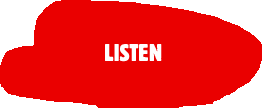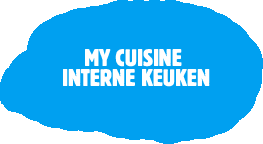STORY
The Cuisine Interne Keuken project was initiated in 2004 (cuisine and keuken mean kitchen in French and Dutch, respectively - 'cuisine interne' and 'interne keuken' means behind the scene, what is not visible and sometimes taboo). It emerged from a shared curiosity of wanting to know how artists and other precarious workers make a living.
During the summer of 2007, I, your archivist, and the person who is writing this story, started to check, complete and clean up the Cuisine Interne Keuken data and database. Simultaneously I also started to think about how we started this whole project. This story shows what I remember about CIK.
From the beginning, it had always been our intention to make this project transferable, namely that someone can make his or her own version of it, by using the tools or modifying them.
This website is the result of this wish. Through that thought of transferability I started to construct a mental frame about how to kind of integrate that history.
This history, what we call a story here, is narrated from my point of view, what I remember and what struck me. The 'we' in this story is me, together with some members of Constant who were temporarily or otherwise involved in Cuisine Interne Keuken.
Let's take a step back into time.
After a stay in Berlin during the summer of 2003 and by visiting several Berlin artists, I became fascinated by the way all these artistssurvive. Is there such a thing as a magic survival formula? How do you calculate a fee? Does the rate you charge depend on who is asking you to do something?
Back in Brussels, these themes were well discussed. The questions kept on growing organically. Together with around 20 artists and precarious workers, we thought about how to make these hidden magical formulas visible.
We decided on the scientific method of a fixed questionnaire. This way, you can listen to the answers chronologically and/or compare them.
The questions were carefully evaluated in order to formulate them as neutral as possible. Not everyone has a so-called standard family structure, for example, so we preferred to use the phrase 'do you provide for other people' instead of 'do you have children'. 'How would you define your activity/job/profession?' is also clearly a very open question, because not everyone has a fixed occupation or sometimes, what someone defines as work can be very ambiguous (for example, the civil servant/science fiction writer Arthur C. Clarke who combined the inspection of teachers' pensions with writing; after an hour of working in his department, he could switch to his fiction - is he a writer or a civil servant then?)
The question 'Do you retain ownership of your work/works once transferred?' is also very open. Whether it's copyright or copyleft is left aside.
This question about authorship/ownership is obviously closely connected to the working and themes of Constant, so it inevitably had to be in the list.
Audio interviews seemed like the most suitable format to us, because video is quite heavy and much more technically complex.
Finally, we also decided to show the working space. We noticed that there is often no distinction between working and living space. Writers, do-it-yourselfers, programmers and musicians, for example, often work at their kitchen table or in the bedroom. However, it's practically impossible to photograph the participants in their own working space, so we asked them to make a drawing of their working space. The collection of drawings has in the meantime become a very unique and valuable part of CIK.
The first series of interviews were done in 2003, during Verbindingen/Jonctions 7, an annual interdisciplinary festival organised by Constant that focuses on experimenting with and setting up a dialogue about the ethics of tools and methods.
The interviewees were not selected according to a scientific method. We simply started interviewing each guest who was invited to Verbindingen/Jonctions. Later we expanded the collection with artists, designers, programmers, curators, academics, activists, critics and musicians that we bumped into at conferences and lectures.
In September 2004, for example, Constant was invited to City of Women City of Women, a festival that takes place in Ljubljana, the capital of Slovenia (click here click here to see what we did there). In between performances, film screenings, exhibitions and concerts, a team of Constant interviewed the artists. The Cuisine Interne Keuken questions were also submitted to local artists, which was our way to break open the event. Our office/working space was located next to the bar of the local art house cinema Kino Dvor.
Because we were on location and most of the artists we interviewed were also guests themselves, it wasn't easy to obtain a picture of their working space. We decided to let the interviewees draw their working space. We got a lot of great material because the concept of a working space is different for everyone. Some drawings are very architectural, others are more abstract. The drawings are attached to question 16 'Pictures of your workspace?'. Each drawing is described by the interviewee (often accompanied by the sound of the pencil or marker they use).
A few examples:
You can check all the pictures of City of Women here:
Without generalising, it did strike us that many artists and precarious workers work at home, often in the kitchen or the bedroom.
The Cuisine Interne Keuken team repeated this recipe at the Htmlles festival in Montreal, where we were invited in May 2005. Click here for the pictures of Htmlles
Constant pictures of Htmlles here, samen met de drawings of working spaces.
We also presented Cuisine Interne Keuken at a colloquium during the Brussels edition of A room, March 11, 2006.
Pictures of A Room:
link
http://gallery.constantvzw.org/main.php?g2_itemId=8160
At the 2005 edition of Brxlbravo, there wasn't much time for interviews, but we kindly invited the visitors to leave us a drawing of their working space.
You can check out those drawings here:
General pictures
The content of the Brxlbravo exhibition SOLIDARtcITE in atelier Mommen perfectly fit in with the theme of Cuisine Interne Keuken.
It is not our aim to go on tour with Cuisine Interne Keuken. An event such as City of Women helped the project to grow, by feeding it with interviews and giving it an extra dimension. But Cuisine Interne Keuken is more a method, a reflection, a collection of moments than an installation.
We made this portal site in order to share the ideas, working methods, software and recipes of this project. The recipes for organising your own Cuisine Interne Keuken project are open for interpretation and adjustable.








